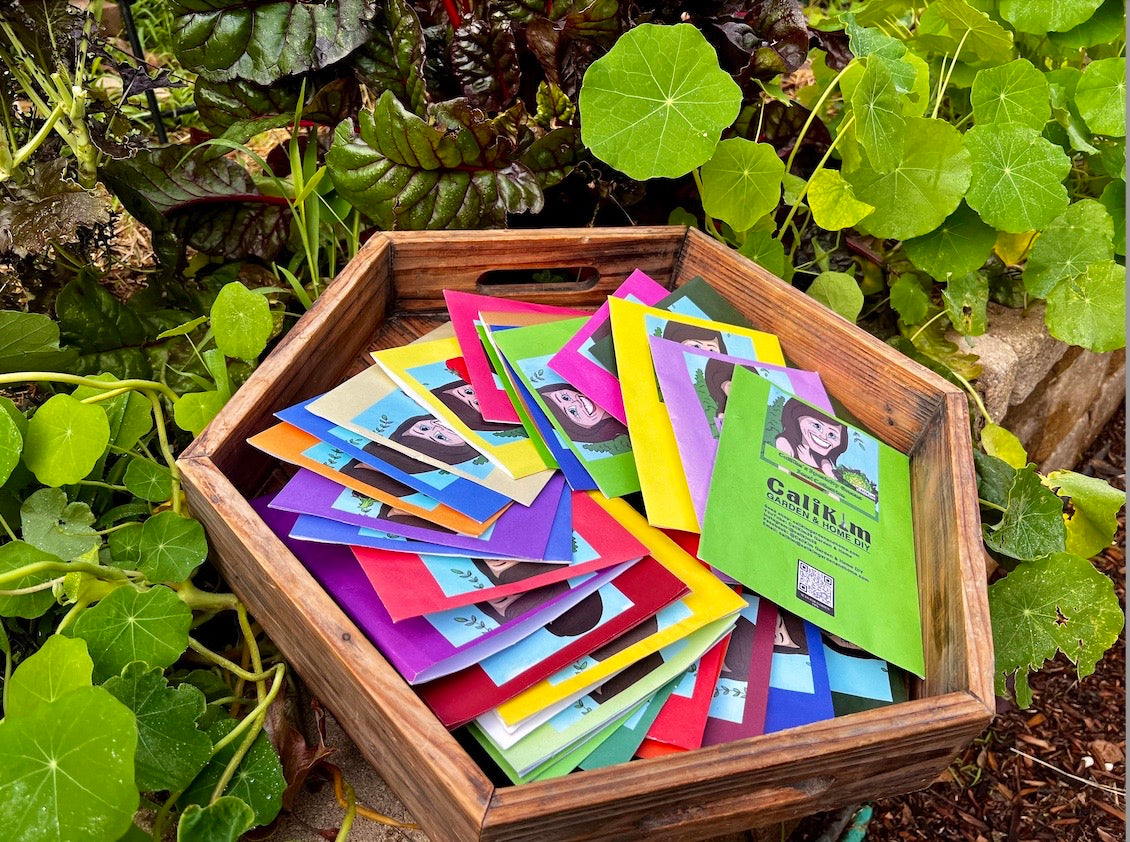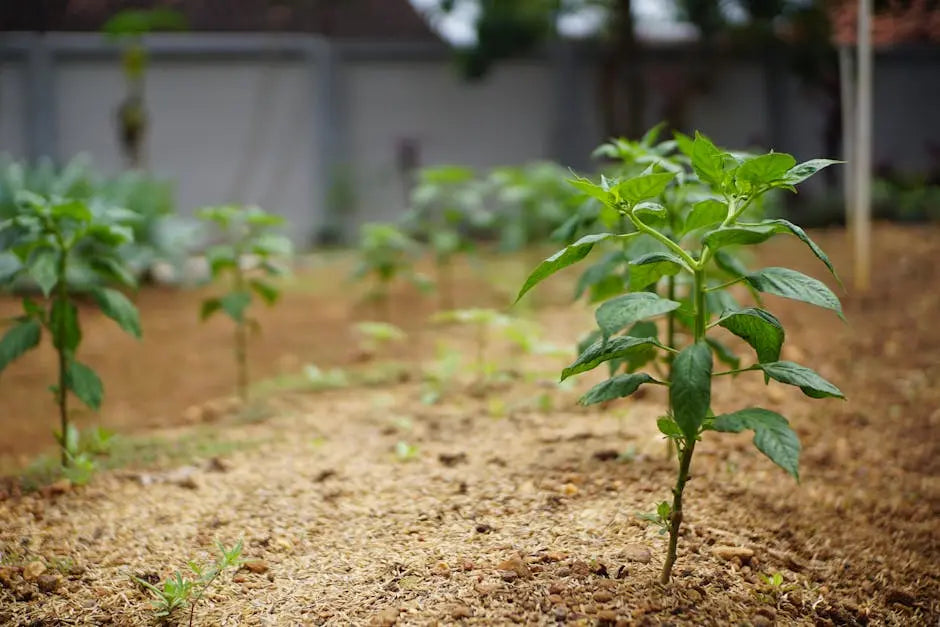Embarking on a gardening journey can be both exciting and daunting, especially for beginners. With so many seed collections available, it can be hard to know where to start. This guide aims to simplify the process by highlighting essential seed collections that any budding gardener should consider. Each collection is chosen not only for its ease of growth but also for the joy it brings to any garden. Let’s dig in and explore the must-have selections that will help you cultivate your green thumb!

1. Colorful Flower Gardens
Creating a colorful flower garden is one of the most rewarding experiences a beginner gardener can undertake. Flowers not only brighten up your space but also attract pollinators, which are essential for a healthy garden. When starting your flower garden, opt for seed collections that feature a mix of annuals and perennials. Annuals such as sunflowers and marigolds provide a burst of color during the growing season, while perennials like coneflowers and daylilies come back year after year, ensuring long-term beauty.
One great advantage of colorful flower gardens is the broad diversity of styles and colors. You can choose bold, vibrant blooms or softer pastels, allowing you to express your personality through your garden design. Additionally, many flower seeds are forgiving and resilient, making them perfect for novice gardeners. For example, cosmos and zinnias are not only easy to grow but also require minimal maintenance. They can thrive in poor soil and are drought-resistant, making your gardening experience more enjoyable.
2. Hearty Vegetable Bounties
There’s nothing quite like the satisfaction of harvesting your own vegetables. Vegetable seed collections are tailored for beginners, providing varieties that are both easy to grow and fulfilling to add to your kitchen. Start with staples such as radishes, lettuce, and green beans, which germinate quickly and require little more than some water and sunlight to flourish. These vegetables not only thrive in early spring but also make excellent companions for each other in your garden beds.
As you grow more confident, consider expanding your vegetable collection to include tomatoes and zucchini. These plants can be incredibly productive, providing you with a continuous harvest throughout the summer. Tomatoes, especially, come in a wide range of varieties, from small cherry tomatoes ideal for snacking to larger beefsteak types perfect for sauces. Don’t forget to plant your vegetables in well-drained soil and provide enough space for them to grow; good airflow helps prevent diseases. Remember, with a little patience and care, you’ll not only grow a garden but also enjoy the delicious rewards of your labor.
3. Fragrant Herb Collections
Growing herbs is an excellent way for beginner gardeners to dive into the world of gardening. Herb seed collections are fantastic because they not only add flavor to your cooking but also offer a wonderful aroma that can elevate your gardening space. Start with easy-to-grow herbs like basil, cilantro, and parsley. These herbs thrive in smaller pots and can be grown on a windowsill or balcony, making them a perfect choice for those with limited space.
Planting herbs can also introduce you to the joys of companion planting. For example, basil pairs wonderfully with tomatoes, both in the garden and on your plate. As these plants grow together, they can enhance each other’s flavors and protect against pests. Additionally, the beauty of herbs lies in their variety; each brings unique textures and scents to your garden. As your garden flourishes, you’ll find joy in both the practical uses of your herbs and the beauty they add to your gardening experience.
4. Vibrant Salad Mixes
A vibrant salad garden can be a beginner gardener’s best friend. Salad mixes often include a variety of leafy greens, radishes, and edible flowers, providing both nutrition and color to your plates. The beauty of salad mixes is that they grow quickly and can be harvested multiple times, allowing for a continued supply of fresh produce. When selecting seeds, look for collections labeled as ‘cut-and-come-again’ to maximize your harvest.
To create a thriving salad garden, consider planting greens like arugula, spinach, and mesclun. They are not only quick to germinate but also hardy and forgiving, making them ideal for early spring planting. Pairing these with radish seeds adds a spicy crunch to your salads and a pop of color from their vibrant red tops. As you cultivate your salad garden, it’s satisfying to watch your greens flourish and know that you’re growing your own healthy meals right in your backyard.
5. Easy-Care Perennials
Perennials are a wonderful addition for beginners looking to establish a low-maintenance garden that rewards them year after year. Easy-care perennial seed collections often include varieties like echinacea, black-eyed Susans, and coreopsis. These vibrant plants bloom beautifully with minimal effort, allowing you to enjoy a colorful garden without constant upkeep. Once established, these perennials can withstand adverse conditions and return with even more vibrancy each growing season.
When planning your perennial garden, consider planting in clusters rather than single specimens. This not only enhances visual impact but also makes watering and maintenance easier. Grouping plants with similar watering and sunlight requirements will simplify your care routine. As you nurture your perennials, watch as they attract pollinators and wildlife to your garden, creating a lively ecosystem that brings joy and energy to your outdoor space.
6. Fast-Growing Microgreens
For those who want to see fast results from their gardening efforts, microgreens are the perfect solution. These tiny plants, which can be harvested in as little as two weeks, are packed with flavor and nutrients. Seed collections for microgreens may include varieties like radish, sunflower, and pea shoot, all of which can be grown in shallow trays or containers. Their quick turnaround makes microgreens an engaging option for new gardeners eager to witness their hard work pay off.
Growing microgreens is not just simple; it also offers the satisfaction of providing fresh produce right from your home. The process requires little more than quality soil, a sunny spot, and sufficient moisture. Additionally, they can be grown indoors, making them an excellent choice for year-round gardening. As you learn the ropes, you may experiment with different varieties and discover new flavors, enriching your culinary experience while enjoying the thrill of gardening.
7. Unique Heritage Varieties
For beginner gardeners looking to add a twist to their garden, unique heritage varieties offer a fantastic opportunity. These heirloom seeds are not only rich in flavor but also come with fascinating histories and stories behind them. Seed collections of heritage vegetables and flowers often include unusual shapes, colors, and tastes that can make your garden stand out. Think of vibrant purple tomatoes or striped beets that will not only delight your taste buds but also spark conversations at the dinner table.
In addition to their unique beauty, growing heritage varieties can also contribute to biodiversity within your garden and community. By cultivating these plants, you are playing a role in preserving plant genetics that might otherwise be lost. This approach to gardening fosters sustainability and connects you to a larger movement aimed at keeping traditional gardening practices alive. As you grow heritage seeds, immerse yourself in the rich history behind each plant and enjoy the stories they bring to your garden.





